How to Make Thickened Soups
Soup is a versatile dish with thousands of kinds of soups. I generally think of thickened soups during cold weather, but a comforting, creamy soup is welcome any time of the year. Thickened soups are soups that have been thickened in several ways. Some thickened soups are fairly high-calorie because of the thickening method (as well as the ingredients in general), and some are downright healthy.
While many thickened soups are hot, some are served cold. Some have large chunks of ingredients, and some are smooth. Some contain meat, and some are vegetarian. But, for this discussion, let’s look at the different ways to thicken the soup.
Roux-thickened Soup
Most often in the United States, when we think of roux, we think of Louisiana. And while it is true that one of the most famous Cajun soups, gumbo, is thickened with roux, roux is also the base for thickening sauces and stews in the European tradition.
A roux is a combination of equal parts flour and fat (oil or butter) that are cooked together. The longer a roux is cooked, the darker the color and the stronger the flavor. Also, the darker the roux, the less thickening power it has.
Gumbo is thickened with a roux, but it is a very dark roux used more for color and flavor than thickening. A light or “blonde roux” is the best choice to thicken a soup without imparting extra flavor.
There are two main ways to add roux to a soup. The first is to make the roux in the soup pot and then add broth or stock and the rest of the ingredients. The second is to make a roux and then add it to the soup at the end. Always add cold liquid to a hot roux and hot liquid to a cold roux (or cold roux to a hot liquid) to keep the resulting soup from being lumpy.
Roux is a versatile ingredient to have in your cooking arsenal. Not only does it thicken and add flavor (when dark enough), but since it contains starch in the form of flour, it can also keep a soup containing cream or cheese from breaking.
Examples: Gumbo with Chicken and Sausage – New England Clam Chowder
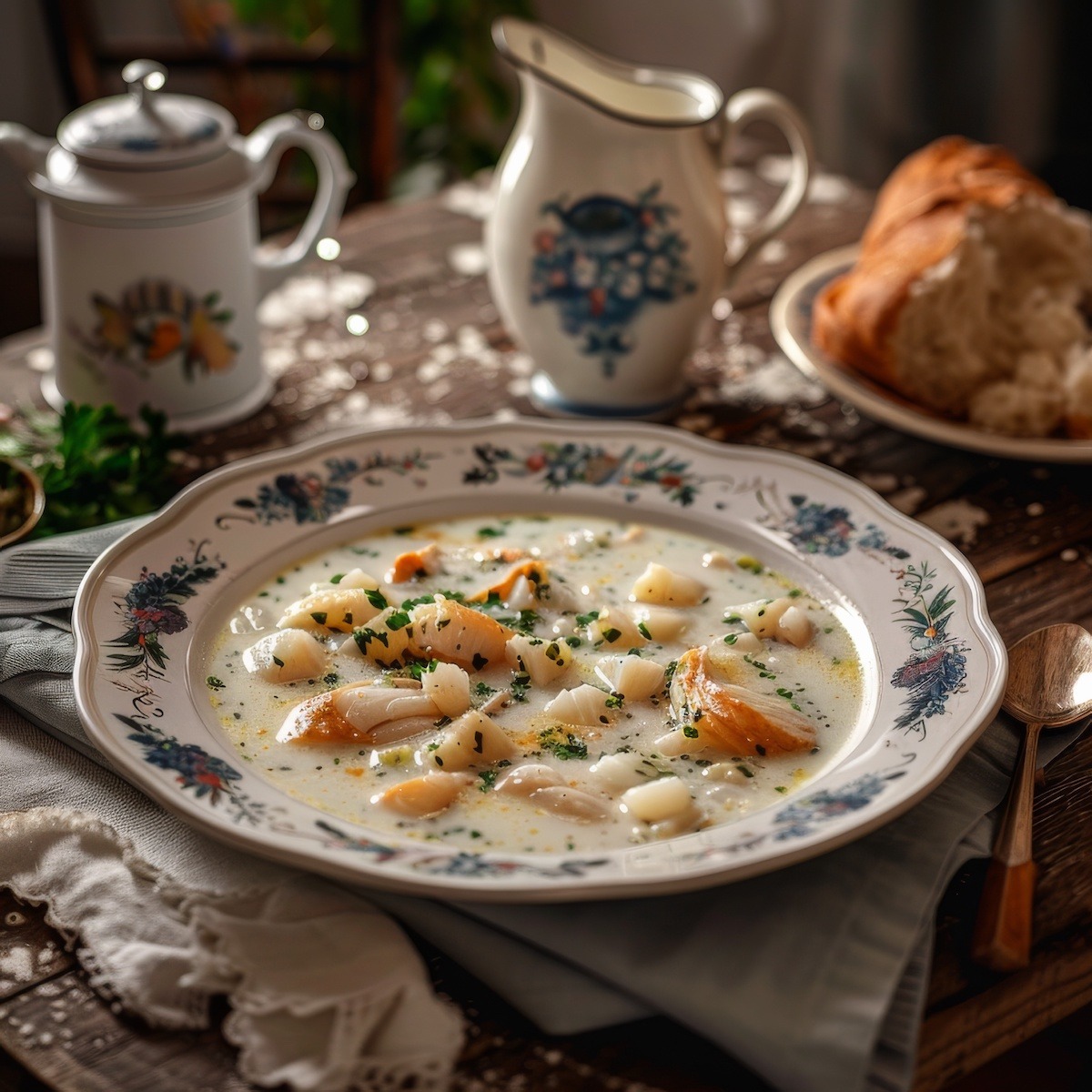
Puree-thickened Soup
Thickening a soup with a puree is a restaurant technique that is very easy to do in the home kitchen. After making soup, all you have to do is either puree a portion of the soup (either in a blender or using an immersion blender) and then stir it back in. The puree adds body to the soup and does nothing to muddy the soup’s flavor since it is the soup.
You can also puree your entire recipe as well.
A third way to thicken the soup is to stir in an additional puree, such as mashed potatoes or pureed cooked rice. This is a great way to use leftovers, and rice and potatoes have a relatively mild flavor that won’t compete with the flavor of your soup.
To use leftover mashed potatoes, heat them up with a portion of the soup broth to loosen them. Then, whisk them into the soup. To use rice puree, blend cooked rice with a bit of liquid and puree in a blender until smooth, and whisk into your soup.
Examples: Chicken and Hominy Soup Corn Chowder (actually uses the starches in grated corn to thicken the soup) – Creamy Chicken Mushroom Soup – Peppercorn Avocado Soup – Red Lentil and Apricot Soup – Roasted Red and Yellow Pepper Puree – Tomato Soup

Slurry-Thickened Soup
A slurry is a thin mixture of starch and cold liquid used to thicken. Most often, the starch used is flour, cornstarch, or potato. The liquid can be water, broth, stock, beer, wine, etc., but it must be cold to prevent lumps.
To thicken a soup with a slurry, whisk together about two tablespoons of starch with 1/4 cup of liquid and drizzle it in. To prevent a raw starch flavor and ensure that the slurry has thickened the soup as much as possible, bring the soup to a boil for a minute or so to cook the starch. Then, add the slurry a bit at a time until the soup is as thick as you desire.
Dairy-Thickened Soup
Adding a touch–or more–of heavy cream to your soup and then letting it simmer for a bit to reduce it is a classic way to thicken a soup. Often, the technique is used in conjunction with a roux. First, make a roux, then put the soup together. Finally, add the cream during the last twenty-thirty minutes of the cooking process.
Other dairy options to add to thicken a soup include crème frâiche and sour cream. If using sour cream, stir it in at the end and keep the soup hot but not boiling. Sour cream will break if boiled. This is not an issue with crème frâiche, so it is probably better to use it if possible.
If you cannot find it, you can make a reasonable substitute by adding 1 Tablespoon of buttermilk to 1 cup of heavy cream, stirring well, and letting it sit, loosely covered, until thickened, about 12-24 hours.
Examples Red Curry and Coconut Soup (uses coconut cream as a thickener)
Egg-Thickened Soup
Some soups, most notably Greek Avgolemono, are thickened with egg or a mixture of egg and cream. Since eggs will curdle if cooked too quickly, whisk a portion of the hot broth into the eggs and then whisk the egg mixture back into the soup. Again, ensure the soup is hot but not boiling–ideally, it should be below 160F. Once you have added the egg, stir over low heat until the soup is about 165F, and remove from the heat.
Beurre Manie-Thickened Soup
Beurre Manie, or kneaded butter, is like an uncooked roux. First, equal parts of flour and butter are kneaded together into a putty-like consistency. Then, bits of this mixture are whisked into the soup at the end of the cooking process until the soup is as thick as you want. Since the fat completely coats the flour particles, you don’t need to worry about your soup getting lumpy. Instead, whisk it right in.
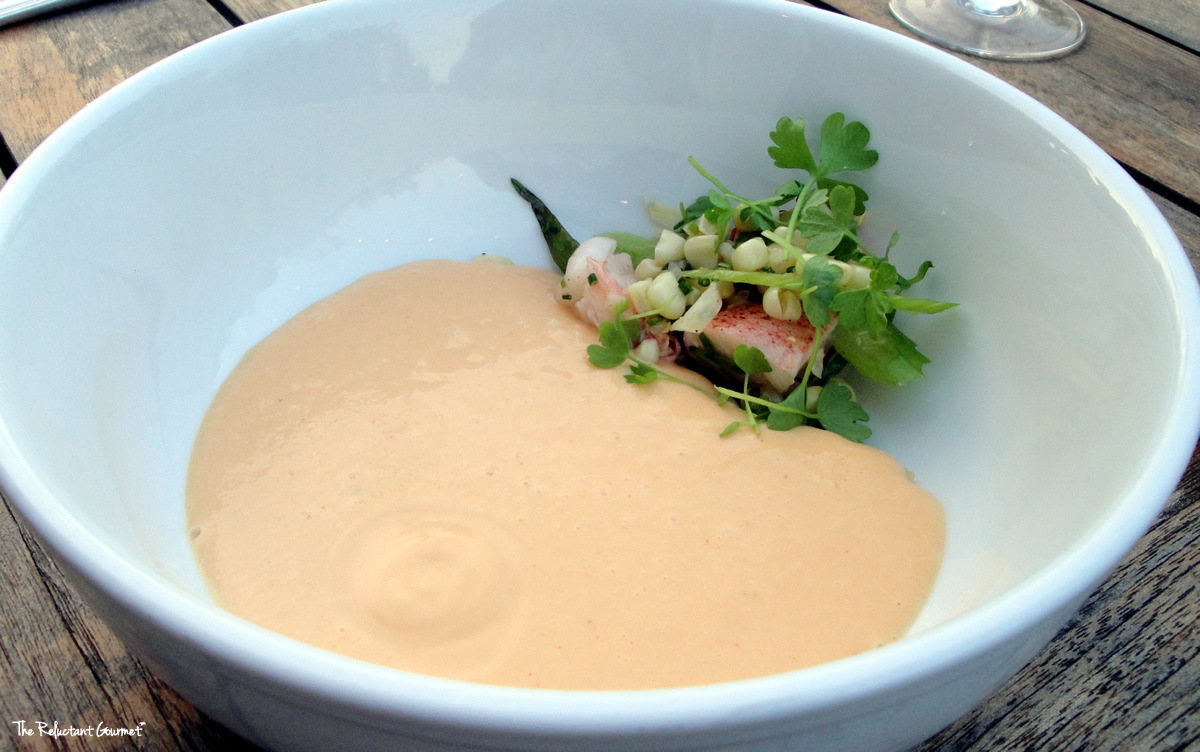
Pasta (or other starch)-Thickened Soup
When making a brothy soup like chicken noodle, you cook the pasta separately and then add it to the finished soup. This keeps the starch from thickening the soup. If you want thickened soup, cook the pasta right in the soup, allowing the starches to leach into the broth, adding body and thickness.
Examples: African Peanut Soup (uses rice as well as peanut butter as a thickener) Split Pea Soup (as the peas cook, the released starches help to thicken the soup)
Bread-Thickened Soup
This sounds like a strange way to thicken a soup, but baked bread is nothing more than starch and protein, both suitable thickeners. Plus, it’s an excellent way to use up day-old bread. To use bread to thicken a soup, puree it with some of the soup and then whisk it in. If you do want to add a bit of flavor, use herb bread. Of course, make sure that the herbs in the bread complement the soup you are making. You can even toast the bread to bring out some caramelized flavor notes.
Combinations
When making a thickened soup at home, don’t hesitate to combine two or more thickening methods. Just keep in mind the flavor of the soup you are thickening and use techniques that complement it. For example, consider these ways to combine thickeners in a soup.
- Start with a roux and then puree all or part of the soup to thicken it further. – Basic Corn Soup Spicy Corn Soup
- Start with a roux and finish with a slurry. – Fish Chowder
- Start with a roux and finish with cream. – Lobster Bisque
- Add pasta to the soup and thicken it with a slurry or egg and cream.
- Puree part of the soup and further thicken by stirring in leftover mashed potatoes.
- Whisk in beurre manie and further thicken with cream.




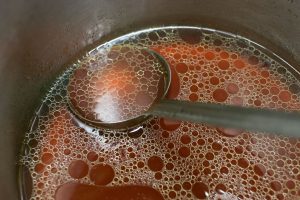

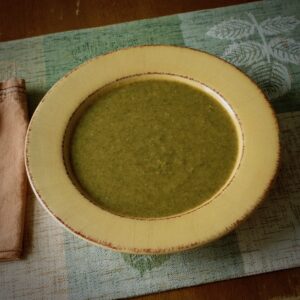
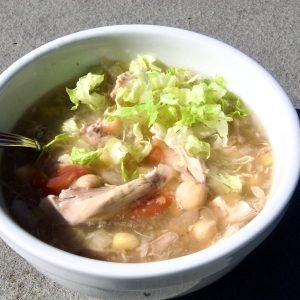





3 Responses
Very informative. Thanks for sharing.
Very informative!
Very informative indeed!